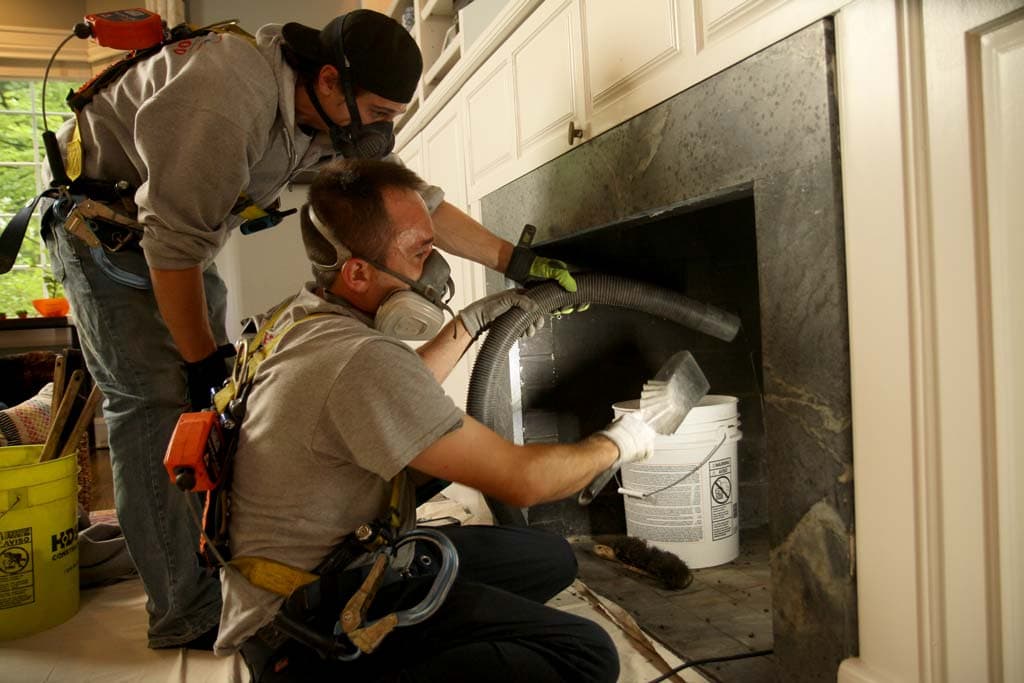San Jose Chimney Repair Solutions: Restoring Your Fireplace Efficiency
San Jose Chimney Repair Solutions: Restoring Your Fireplace Efficiency
Blog Article
Comprehending the Importance of Regular Examinations for Typical Chimney Repair Work
Routine examinations of smokeshaft systems are not merely a suggestion; they are a vital part of home safety and security and efficiency. Understanding the nuances of these assessments can not just save house owners from costly repairs however also boost the general life expectancy of their chimney.

Advantages of Routine Evaluations

Moreover, normal inspections add to the durability of the chimney system. Regular upkeep aids to identify deterioration, permitting timely repair work that can prevent more extensive damage and expensive repairs in the future. This proactive method not just saves cash but likewise makes certain that the smokeshaft operates at optimal effectiveness.
Additionally, normal evaluations can enhance power performance by guaranteeing that the smokeshaft is functioning appropriately, enabling for proper air flow of burning gases. This can cause enhanced heating efficiency in the home, lowering energy expenses.
Typical Smokeshaft Issues
Routine smokeshaft inspections can reveal a variety of typical problems that might impact the safety and effectiveness of the system. One widespread issue is the accumulation of creosote, a highly combustible compound that forms from the burning of wood. Gradually, a thick layer of creosote can develop up, boosting the danger of smokeshaft fires otherwise addressed without delay.
Another typical issue is harmed or deteriorating mortar joints. These joints are important for preserving the architectural integrity of the chimney.
Finally, chimney crowns might break or collapse due to exposure to rough climate condition. A damaged crown can enable water seepage, which can aggravate other issues, consisting of rusting of metal components and wear and tear of brickwork. Identifying and resolving these common smokeshaft concerns with regular examinations is important in extending the life of your chimney and guaranteeing its risk-free procedure.
Security Threats to Think About
Chimney safety risks can posture substantial threats to both building and owners otherwise appropriately managed. One of one of the most pressing worries is the accumulation of creosote, a flammable byproduct of shedding wood that can ignite and cause smokeshaft fires. Normal assessments can recognize and mitigate this threat before it rises into a harmful circumstance.
Another crucial danger is structural integrity. Gradually, chimneys can establish fractures or degrade because of weather direct exposure, which can lead to potential collapses or leaks. This not just jeopardizes the chimney's function yet can also threaten the whole framework these details of the home.
In addition, inappropriate ventilation can cause harmful gases, such as carbon monoxide gas, penetrating living areas. A well-maintained chimney should ensure ample airflow, protecting against the build-up of these harmful fumes.
Finally, pet nests and particles can obstruct flues, enhancing the risk of smoke backdrafts or fires. Comprehensive examinations can uncover these hidden dangers, guaranteeing that chimneys continue to be secure and practical. By prioritizing regular inspections, house owners can significantly minimize these safety and security risks and shield their building and liked ones.
Cost-Effectiveness of Upkeep

Additionally, keeping a tidy and practical chimney boosts the performance of heating unit, decreasing power costs. A properly maintained smokeshaft permits better air flow, making it possible for heating devices to run at peak performance. This performance not just decreases energy bills however likewise expands the life-span of the furnace.
Additionally, the cost of routine evaluations is commonly minimal compared to emergency situation fixings that can emerge from forget. Home owners may additionally deal with raised insurance policy costs or problems in insurance claims if a chimney-related case occurs as a result of absence of maintenance.
Picking a Certified Examiner
Selecting a certified examiner is critical for guaranteeing the safety and performance of your smokeshaft. When browsing for an examiner, consider their credentials; look for experts accredited by acknowledged organizations such as the Smokeshaft Security Institute of America (CSIA) or the National Fireplace Institute (NFI)
In addition, choose inspectors with substantial experience in smokeshaft maintenance. An experienced expert will have come across various problems and will certainly be much better equipped to provide precise assessments. Checking out on the internet reviews and reviews can provide understandings into the inspector's credibility and integrity.
A qualified assessor needs to perform a thorough evaluation of the smokeshaft structure, flue, and surrounding areas, utilizing suitable devices and techniques. This documentation is essential for preserving your chimney's safety and security and efficiency.
Conclusion
In conclusion, the value of regular chimney inspections can not be overstated. These evaluations serve as a proactive measure to identify usual concerns, mitigate safety and security threats, and improve the overall efficiency of the chimney system.
Report this page